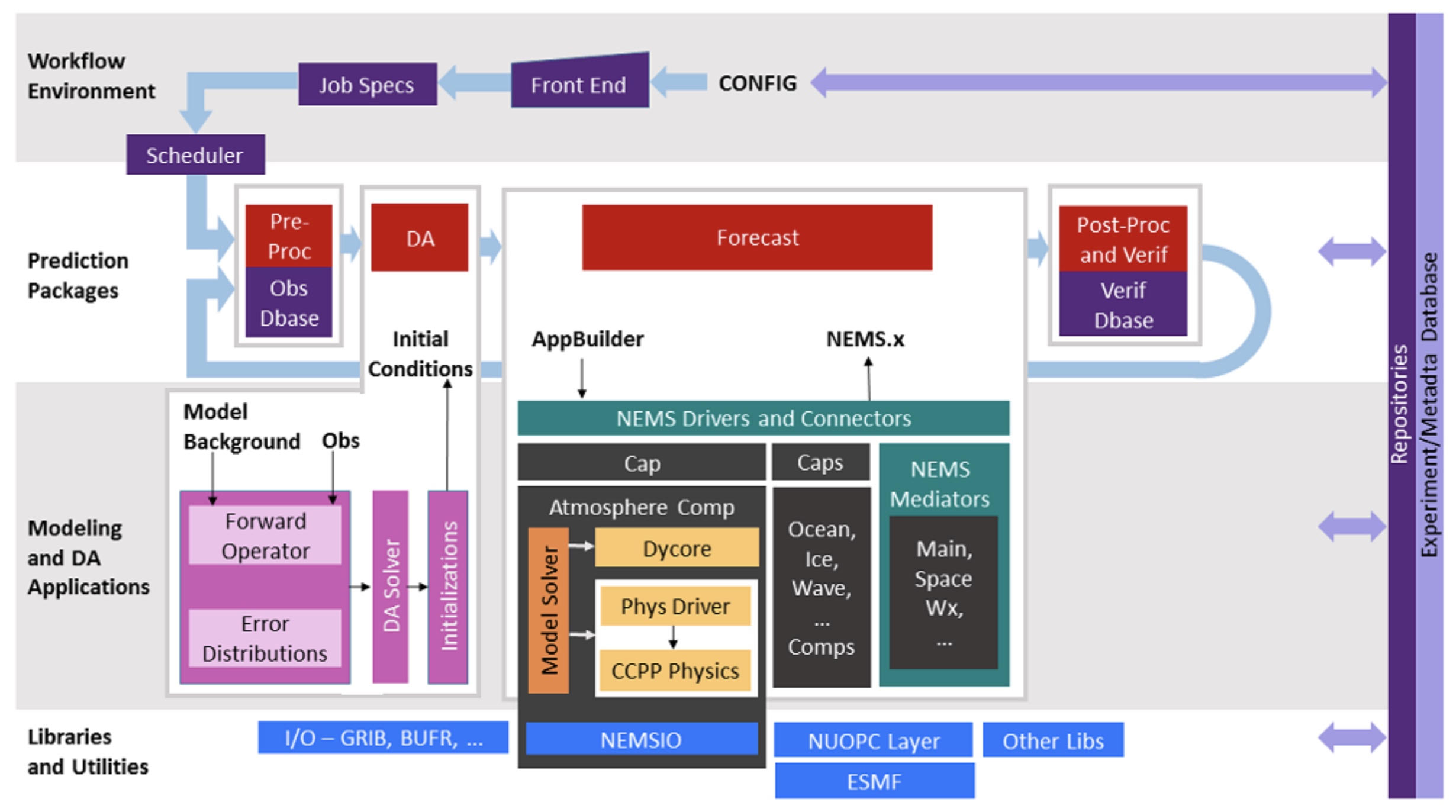
The UFS system architecture serves as the backbone of a unified modeling system, and must provide high performance, reliable technical and scientific functions for a range of different forecast products. System architecture can be defined as “the fundamental organization of a system, embodied in its components, their relationships to each other and the environment, and the principles that govern its design and evolution.” The design of the architecture is relevant to research community partners because it must make it easy for them to perform runs and experiments, and participate as full partners in model development. An initial conception of the system architecture (see the figure) is a layered, component-based structure, divided into
- Workflow Environment that includes a user interface and database of experiment metadata for previous runs, including metadata about input datasets and observations/analyses used for verification,
- Prediction Package layer that consists of a sequence of pre-processing, data assimilation, forecast, and post-processing jobs,
- Modeling and Data Assimilation Application layer that includes the coupling framework (the NOAA Environmental Modeling System, or NEMS), a prescribed interface between atmospheric physics and dynamics, model components, and data assimilation components, and
- layer of Libraries and Utilities.
Each layer utilizes components, which can be defined as “composable” software elements that have a clear function and interface. The system architecture includes elements that are complete and others that are still in progress. The portion of the system diagram that relates to coupled modeling applications is shown in teal and black. NEMS is shown in teal and includes a main coupler, a space weather coupler, a driver, and tools for building applications and running specific cases.
